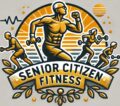The Benefits of Regular Blood Pressure Monitoring for Seniors
How a Simple Routine Can Save Lives and Improve Quality of Life
Discover why regular blood pressure monitoring is essential for seniors. Learn the benefits, best practices, and how home monitoring empowers better health outcomes.
High blood pressure, also known as hypertension, isn’t called the silent killer for nothing. It creeps into your life quietly, often showing no obvious symptoms at first. Many people simply don’t realize they have it until it’s dangerously high. I learned this heartbreaking truth firsthand when I lost my brother to undiagnosed hypertension. One evening, he went to sleep and tragically never woke up. His story is a powerful reminder that hypertension shouldn’t be ignored.
My goal in writing this article is simple: if reading it prompts even one person to get their blood pressure checked, it will have made all the difference.
As we age, life brings wisdom—but it also brings changes in how our bodies work. One of the most common and quiet health challenges for older adults is high blood pressure, also known as hypertension. What makes it especially sneaky is that it often shows no symptoms until serious damage is already done. That’s where regular blood pressure monitoring for seniors becomes not just helpful, but essential.
Let’s dive into why this habit matters so much, what tools can help, how to monitor effectively, and how this simple practice could dramatically improve health, independence, and longevity.
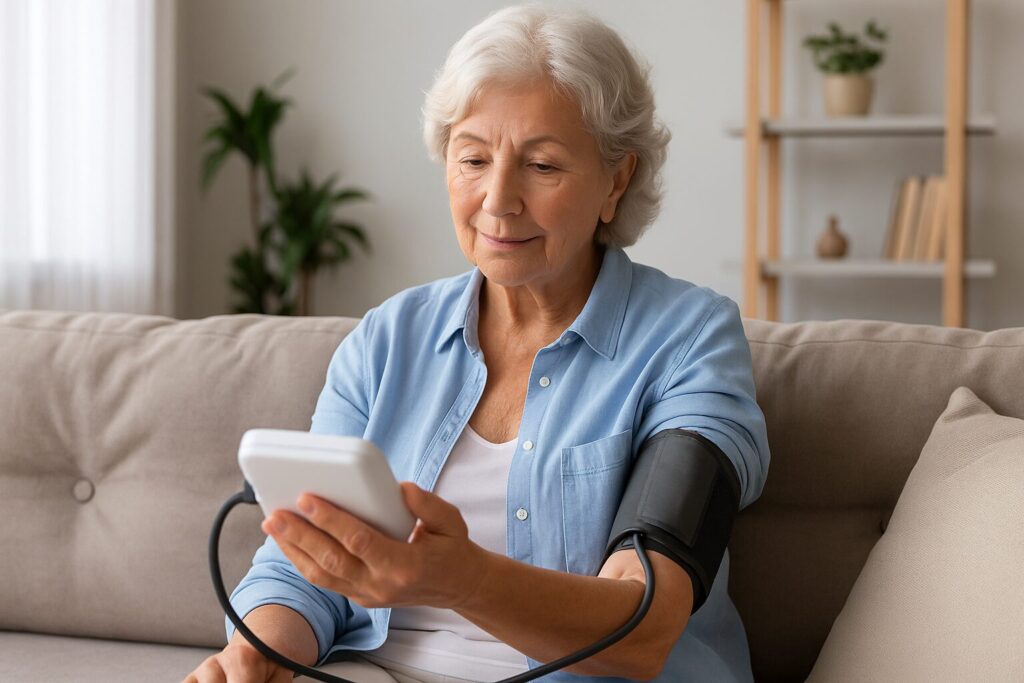
Why Is It Important to Monitor Blood Pressure Regularly?
Think of regular blood pressure checks like checking the weather before heading out—except it’s your health forecast. High blood pressure often goes undetected until it causes something serious like a heart attack, stroke, or kidney failure. That’s why it’s often called the “silent killer.”
For seniors, whose cardiovascular systems may already be more fragile, monitoring blood pressure at home provides an early-warning system. It helps catch abnormalities before they escalate into emergencies.
Key Benefits of Regular Monitoring:
- Early detection of hypertension or sudden spikes
- Better management of existing conditions
- Timely adjustments to medication
- Reduced risk of life-threatening complications
- More peace of mind and control over personal health
The Convenience of Home Blood Pressure Monitors
Gone are the days when blood pressure could only be checked at the doctor’s office. Now, reliable and easy-to-use home blood pressure monitors are available for seniors to use anytime.
What Makes Home Monitoring So Valuable?
- Instant feedback: You can know your numbers right away.
- Reduced clinic visits: Ideal for seniors with mobility or transportation challenges.
- Tracking trends over time: Spot patterns that help with better medical decisions.
- Empowerment: Taking readings regularly encourages health ownership and builds awareness.
Imagine being able to detect if a new medication is working—or not—just by seeing how your numbers shift over the course of a week.
What Are the Benefits of Using a Blood Pressure Monitor at Home?
Let’s break it down even further. A home blood pressure monitor offers:
✅ Comfort and Ease
Take a reading while sitting in your favorite chair, at a time that works for you.
✅ Accuracy Over Time
Doctors often prefer home readings because they reflect your real-life numbers, not the elevated readings some get from “white coat syndrome” (feeling nervous at the doctor’s office).
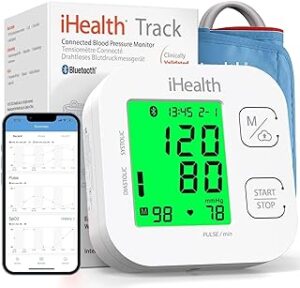
✅ Personalized Health Management
When your doctor sees consistent readings over weeks instead of a single number, they can better tailor your treatment and care.
Best Practices for Blood Pressure Monitoring
Monitoring regularly is great—but doing it correctly matters even more. Let’s answer some common questions seniors (and their families) often ask.
When Should I Check My Blood Pressure?
- Morning: Just after waking and before medication or food.
- Evening: Before bed, at least 30 minutes after dinner.
Checking at the same times every day ensures consistency and allows better comparison.
How to Relax Before Taking Blood Pressure
Relaxation improves accuracy. Here’s how:
- Sit still and breathe deeply for 5 minutes beforehand.
- Don’t talk while taking the measurement.
- Avoid caffeine, exercise, or smoking for 30 minutes prior.
Why Is Blood Pressure Lower the Second Time I Take It?
This is common. The first reading may be high due to movement or anxiety. A second reading usually reflects a more relaxed state. Many experts recommend taking 2 readings one minute apart and averaging the results.
When Not to Take Blood Pressure
Avoid checking when:
- You’re upset, anxious, or in pain.
- You’ve just eaten a big meal.
- You’ve had caffeine or alcohol recently.
These factors can cause temporary spikes or drops in your blood pressure.
How Often Should You Check Blood Pressure With Hypertension?
- If newly diagnosed: 1–2 times per day for a few weeks.
- Once stable: A few times per week.
- Always follow your doctor’s recommendation.
Checking too frequently may lead to unnecessary worry and misinterpretation.
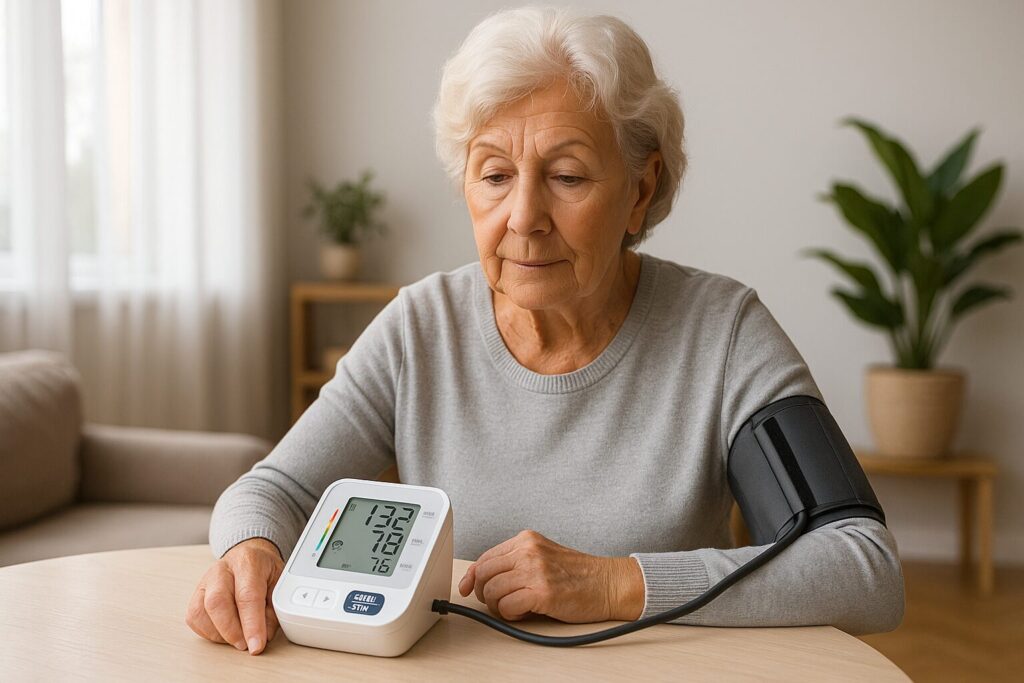
What Time of Day Is Blood Pressure Highest?
Generally, blood pressure peaks mid-morning and dips at night. That’s why morning and evening checks are most helpful to understand your body’s rhythm.
Maximizing Health with Controlled Blood Pressure
Monitoring isn’t just about avoiding emergencies—it’s about thriving. Let’s talk about what controlled blood pressure can do for your life.
What Are the Benefits of Having a Normal Blood Pressure?
- Reduced risk of stroke and heart disease
- Improved kidney function
- Less fatigue and dizziness
- Fewer hospital visits
- Greater longevity and independence
Maintaining normal blood pressure helps keep you active, mobile, and able to enjoy your day-to-day life with fewer limitations.
Lifestyle Tips That Complement Monitoring
In addition to checking your readings, adopting these healthy habits goes a long way:
1. Move Your Body
- Aim for 30 minutes of walking, swimming, or light exercise most days.
2. Eat Smart
- Focus on leafy greens, whole grains, and low-sodium foods.
- The DASH diet (Dietary Approaches to Stop Hypertension) is highly recommended.
3. Stay Hydrated and Limit Alcohol
- Dehydration can affect blood pressure too. Drink plenty of water and avoid excessive alcohol.
4. Lower Stress
- Meditation, stretching, music, or simple breathing exercises can help manage blood pressure naturally.
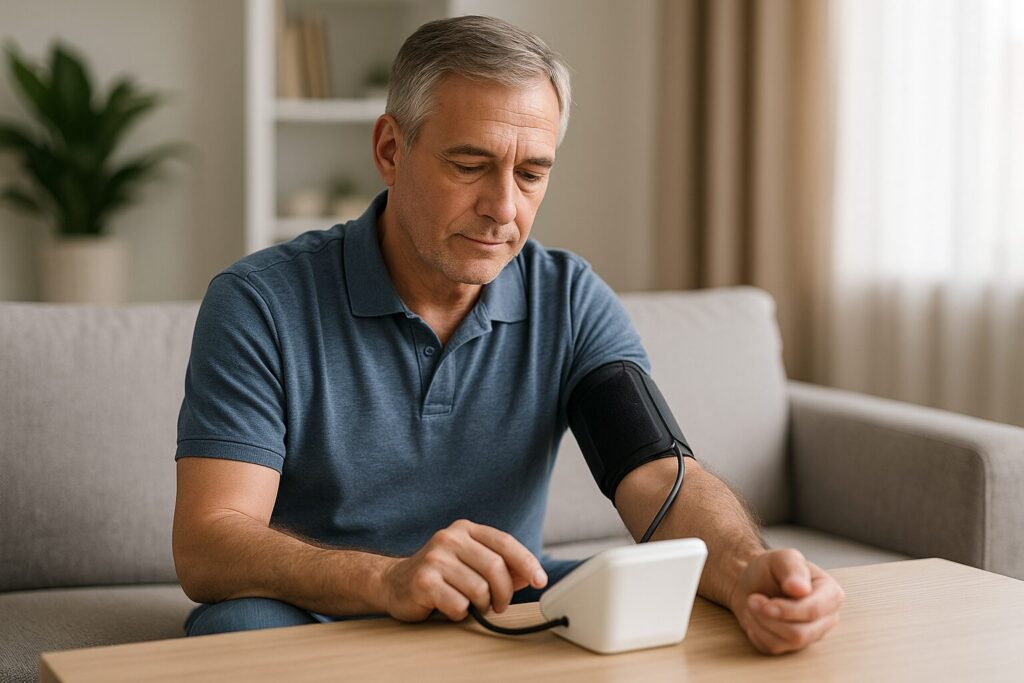
The Role of Your Doctor in Monitoring
Even though home monitoring is powerful, your healthcare provider plays a key role in interpreting the numbers. Bring your log of readings to appointments and discuss any patterns or concerns.
Your doctor might:
- Adjust medications based on your trends
- Recommend additional tests
- Provide dietary or lifestyle recommendations
- Encourage you to monitor more or less frequently
Common Mistakes to Avoid
Let’s face it—mistakes happen. But when you’re aware of them, you can avoid skewed results.
❌ Taking Measurements Immediately After Activity
Always sit and rest before checking your BP.
❌ Using the Wrong Cuff Size
An improperly fitted cuff can give incorrect readings. Make sure the cuff suits your arm size.
❌ Inconsistent Routine
Skipping days or changing your timing too much can lead to confusing data. Stay consistent.
❌ Overchecking and Stressing
If you’re taking your BP 10 times a day and worrying constantly, it might do more harm than good. Track it thoughtfully and discuss any concerns with a doctor.
Real-Life Scenario: Empowering Health Through Monitoring
Meet Dorothy, age 73. She was diagnosed with high blood pressure two years ago. Her doctor recommended home monitoring. At first, she was skeptical. But after a few weeks of logging her readings, she saw how diet and walking daily dropped her numbers.
With her doctor’s help, she even reduced her medication slightly—something she’s proud of. Now, checking her blood pressure is part of her routine, just like brushing her teeth.
Dorothy’s takeaway?
“I feel more in charge of my health. It’s not scary anymore—it’s empowering.”
Final Thoughts: Small Habit, Big Rewards
Regular blood pressure monitoring isn’t just a number on a screen—it’s a window into your health. For seniors, it’s a crucial step toward living a longer, fuller life.
By catching warning signs early, staying consistent, and working closely with your doctor, you transform a daily habit into a life-saving practice. Plus, with the right home monitor and a relaxed routine, it’s easier than ever.
👉 Don’t wait until something feels wrong. Start monitoring today—and encourage your loved ones to do the same.
Call to Action:
Ready to take control of your heart health?
- Pick up a reliable home blood pressure monitor.
- Set a daily reminder.
- Start logging your readings.
- Share your results with your healthcare provider.

My name is Larry, and I’d like to thank you for visiting Senior Citizens Fitness. I’m so passionate about staying fit in my later years. I hope you found some useful information here. Thanks again, and please subscribe and leave comments.
If You are a Senior like me and passionate about something and want to blog about it and possibly earn a decent income. Check this out.
